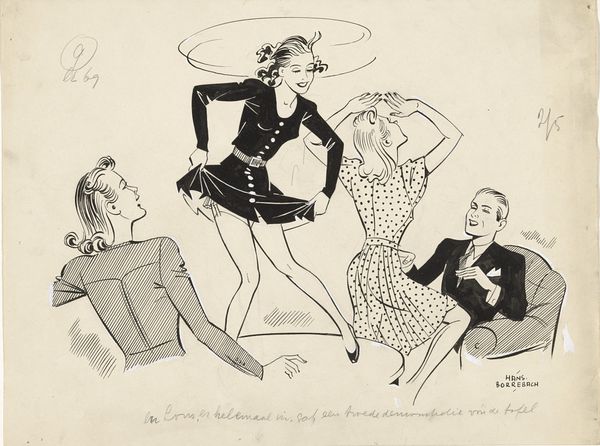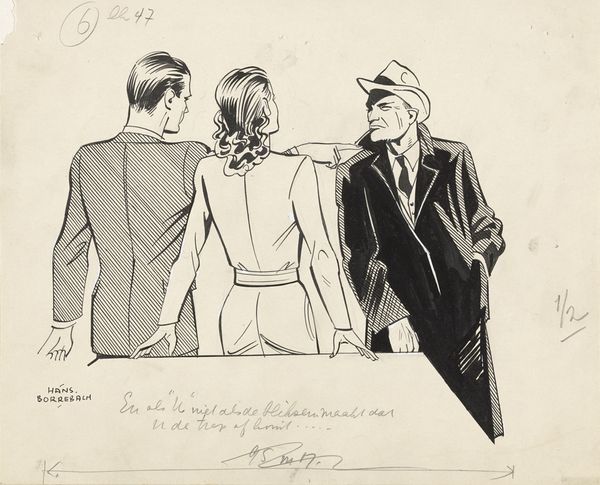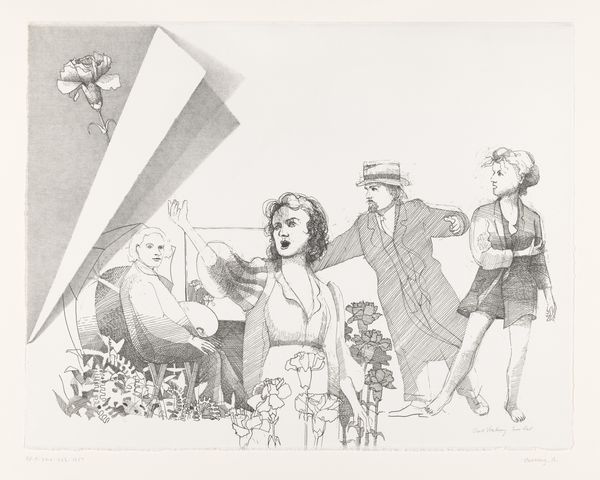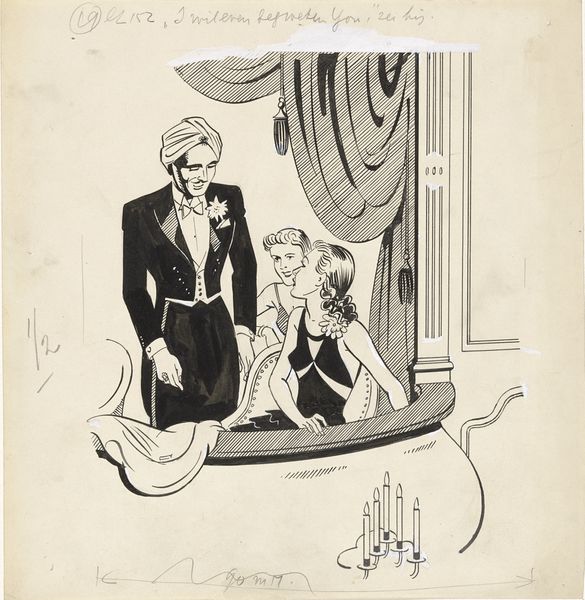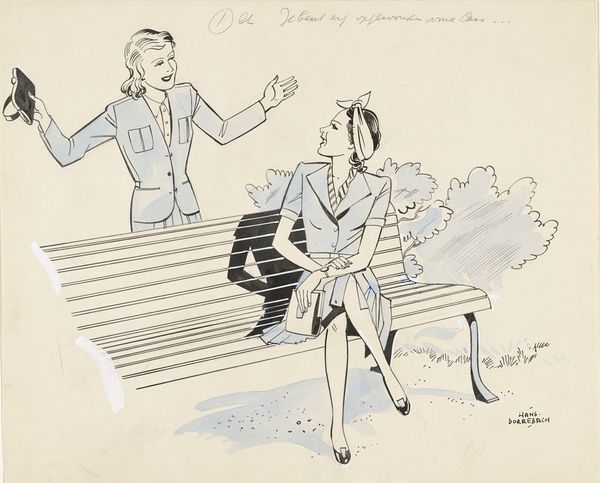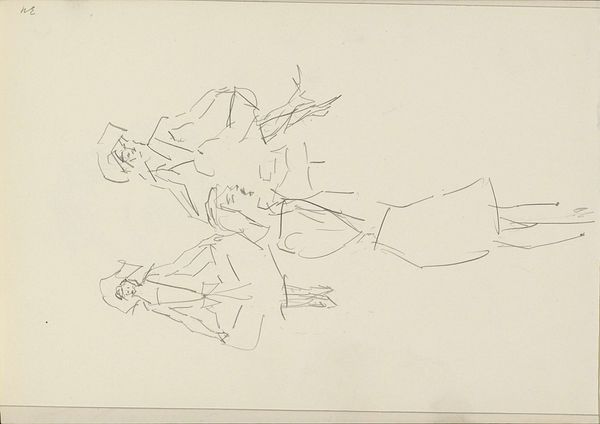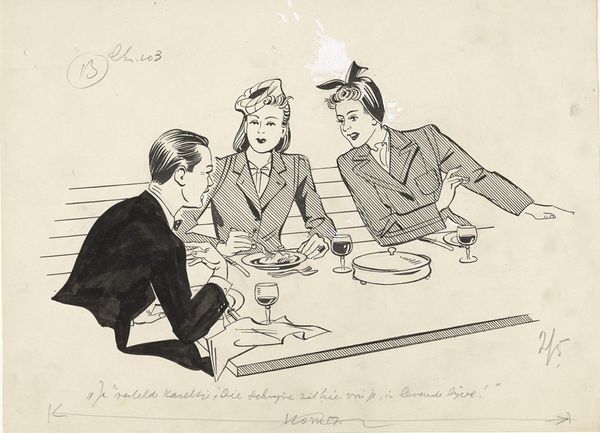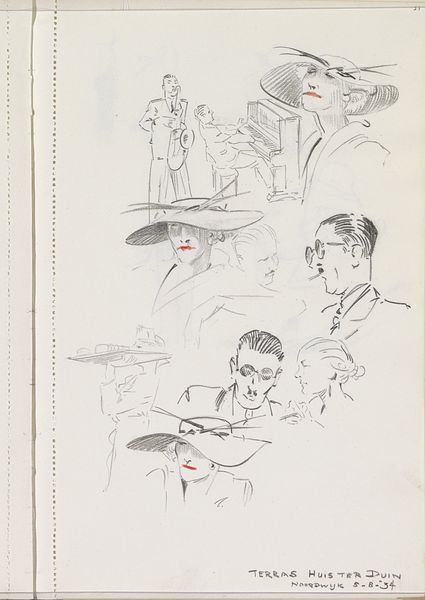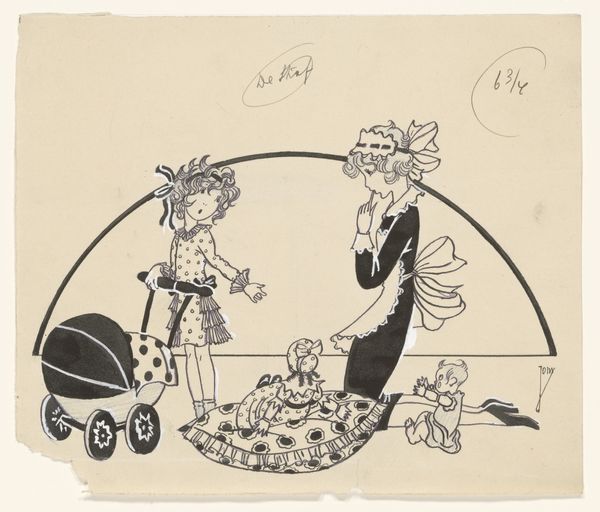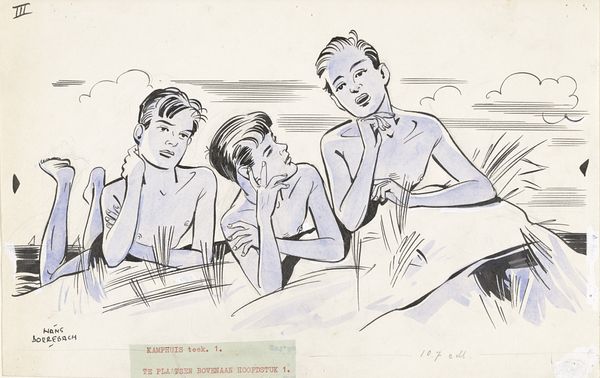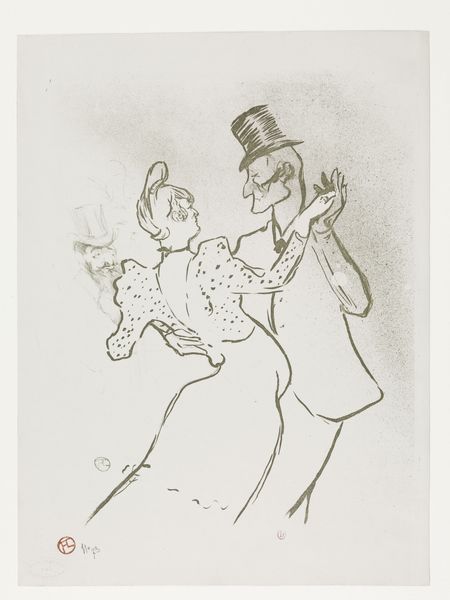
drawing, ink, pen
#
portrait
#
drawing
#
imaginative character sketch
#
quirky illustration
#
quirky sketch
#
narrative-art
#
caricature
#
cartoon sketch
#
figuration
#
personal sketchbook
#
ink
#
idea generation sketch
#
ink drawing experimentation
#
sketchbook drawing
#
pen
#
genre-painting
#
cartoon style
#
cartoon carciture
#
modernism
Dimensions: height 221 mm, width 296 mm
Copyright: Rijks Museum: Open Domain
Curator: Welcome. We're looking at Hans Borrebach’s drawing "Pepita kijkt naar een man in een auto," dating from before 1948. It depicts a woman looking at a man in a car. Editor: My immediate reaction is…noir. Definitely has that smoky back-alley feel. And what a contrast of light and dark in those ink washes! I wonder what paper he used. Curator: Ink on paper captures fleeting moments beautifully, and here, it really conveys a sense of storytelling, doesn't it? Look at the exaggerated expressions, almost like character archetypes. Editor: Absolutely! And the stark simplicity really foregrounds the material. No fussy details—just lines and blots creating volume, almost like improvisational theater on paper. It really speaks to his process. Curator: It's evocative, like a freeze-frame from a mid-century movie, hinting at hidden intentions. That man leaning out of the car—is he a threat or a savior? There's also a symbol hidden within the script in the lower portion of the artwork. Can anyone interpret what this word might represent? Editor: Or maybe just an opportunistic admirer? Still, thinking about production, what kind of pen was Borrebach using? A broad nib, I’d wager, considering the bold lines defining the shoulders. The speed of execution is fascinating! Was this mass-produced or carefully rendered one by one? Curator: That line of inquiry is useful for further discovery, yes. The artist is building a narrative right before our eyes, relying on visual shorthand that everyone from that time period understands and has a visceral reaction. The scene is common but we can't exactly decipher its story, and this uncertainty haunts us. Editor: Exactly. The car—what kind is it? Where was it made? Every little part connects back to some manufacturing process. It's all connected! Thank you, Curator, that made me see a different point of view on the matter. Curator: Likewise, it's so great to hear how social and cultural context informs our experiences!
Comments
No comments
Be the first to comment and join the conversation on the ultimate creative platform.
